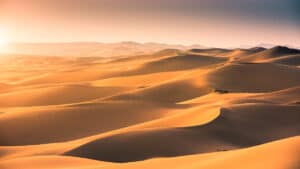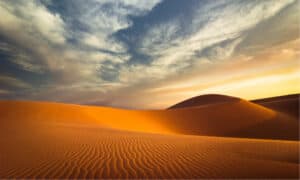The Arabian Desert is the largest desert in Asia, covering a large portion of the Arabian Peninsula. With a vast reach of over 900,000 square miles, it is the third largest non-polar desert in the world, surpassed only by the Sahara and the great Australian deserts. Its land area supersedes that of France (Western Europe’s largest country) up to four times. It is also surrounded by several significant landmarks, making it one of the most impressive natural landmarks in the world. Read on for more interesting facts about the Arabian desert.
Arabian Desert – Location
Politically, the Arabian Desert lies within the borders of Saudi Arabia. But the large size of the desert means parts of it are found in several countries. A significant portion of the desert is found in neighboring Yemen and Oman. It also extends into the modern sheikhdoms of the United Arab Emirates and Qatar. It splurges further into Kuwait and Jordan, and traces of the desert are also found in Iraq.
Located in southwestern Asia, the Syrian Desert is on the Arabian Desert’s northern border. To the west, it is bordered by the red sea, While the south/southeast is next to the Gulf of Aden and the Arabian Sea.
Geography & Features
Generally, the Arabian Desert is divided into three individually named deserts. These include the “Ar-Rub’al-Khali” (The Empty Quarter) in the south, The central Ad-Dhana Desert, and the northern An-Nafud Desert. The Rub’al-Khali Desert is one of the world’s largest continuous bodies of sand. This sand desert encompasses most of the southern third of the Arabian Peninsula. The Ad-Dhana Desert forms a corridor connecting the Rub’al-Khali and the An-Nafud Desert.
Beyond its expanse into different countries, the desert is surrounded by several notable mountain ranges. Mount Al-Nabi Shu’ayb looms at a height of 12,336 feet above sea level in the southwestern corner of the desert area that belongs primarily to Yemen. In the Southeast, Mount Al-Sham stands high at 9,957 feet. Mount Al-Lawz in the northwest follows closely at 8,464 feet.
Away from these mountainous areas, the rest of the desert has a moderate relief characterized by broad plains with relatively low elevations. At least one-third of the entire land area of this desert is covered with sand.
As you move towards the northern edges of the Arabian Desert, the landscape gradually merges with the elevated topography of Arab Asia. This part of the desert is known as the Syrian Steppe. Although a bare, treeless plain, the Syrian Steppe is notable for its wild beauty.
While the surface of the Arabian Desert is mostly barren, the subsurface has proven to be quite rich in natural resources. Natural gas, sulfur, and phosphates have been extracted from the Arabian Desert for several years. Recently, a reserve of ancient groundwater was also discovered in the desert.
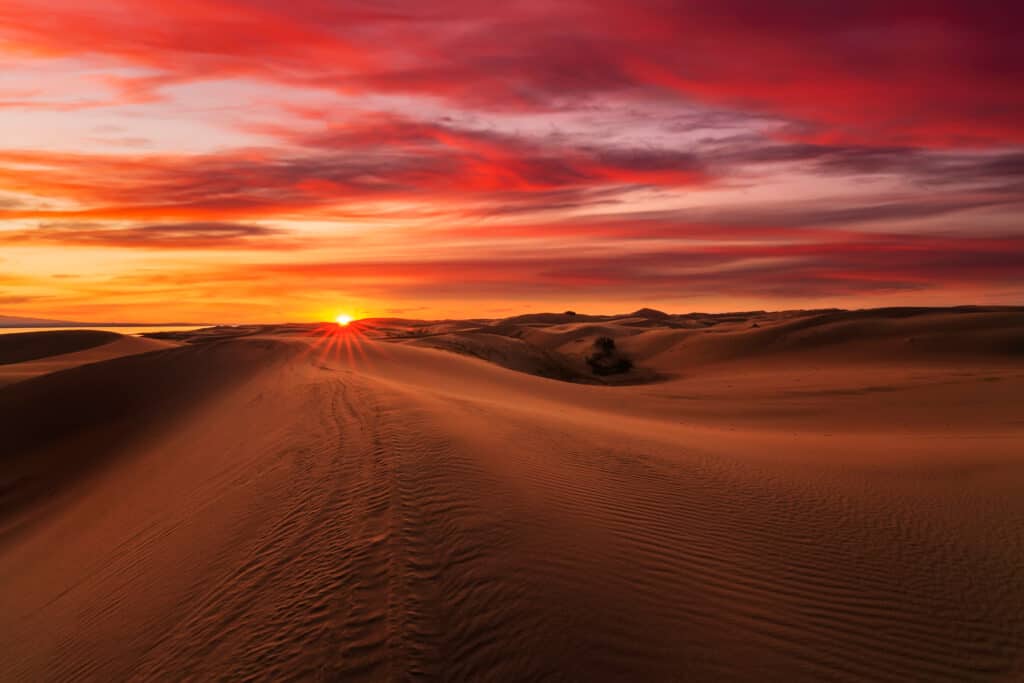
The Rub’al-Khali Desert is one of the world’s largest continuous bodies of sand, encompassing a third of the Arabian Desert.
©Anton Petrus/Shutterstock.com
Climate
The Arabian Desert has a hot subtropical climate that is synonymous with that of the Sahara. As expected of any true desert, the Arabian Desert is characterized by low annual rainfall and humidity. The climate is dry, with an average of 100 mm (4 inches) of rain annually. The driest areas are in the northwest and deep south.
The Arabian Desert also receives a lot of sunshine. The desert enjoys 2,900 hours to 3,600 hours of sunlight. Most people think that the overall dryness of the region is the main reason why the desert is uninhabitable, But the daily temperature extremes are probably the harshest thing about the desert. Temperatures can go as high as 50 degrees Celsius during the day. Nights are extremely cold, with winter nights even colder (mostly below freezing). Highlands and northern regions are subjected to extremely cold weather.
The Arabian Desert is also known for Shamals. These windy seasons occur twice annually and last for about forty days. Shamals occur during the first two months of the winter season and then the spring season as well. Shamals constantly alter the positioning of the dunes. They blow forcefully and fast, averaging as much as thirty miles per hour.
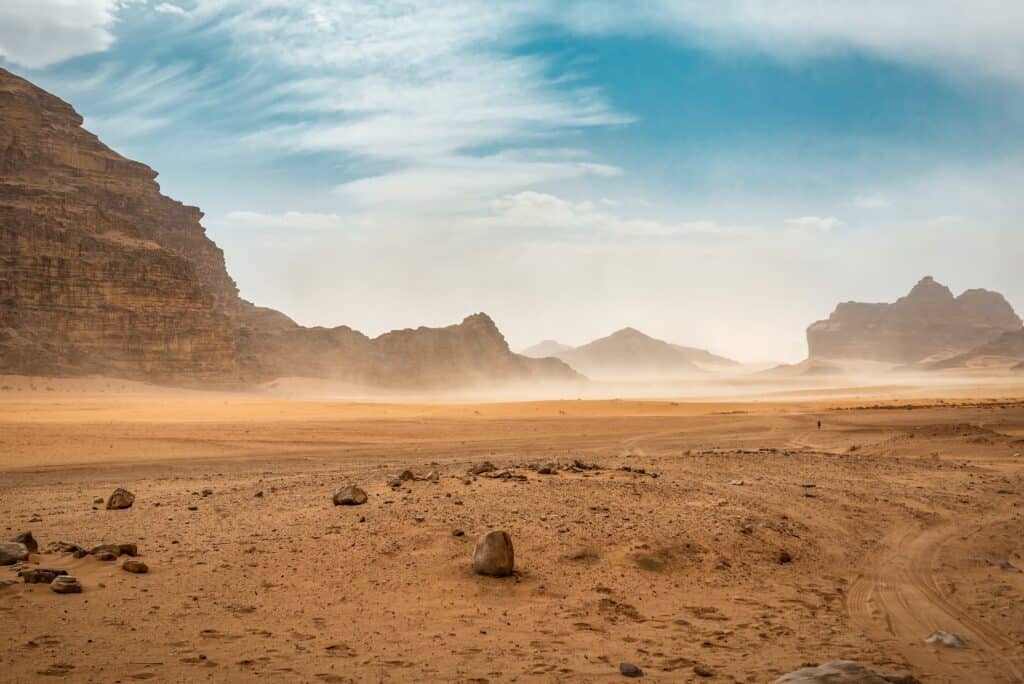
The Arabiab Desert is known for its powerful wind storms, known as “shamals.”
©Vova Shevchuk/Shutterstock.com
Plant Life Of the Arabian Desert
The Arabian desert has a variety of desert flora. Most of the plants in the area are adapted to cope with limited water supply. Nature is usually alive during the rainy season. Seeds germinate and blossom in hours whenever it rains in the spring, and the barren gravel plains turn green. The salt-tolerant plants grow on the saline flats.
One of the most prominent desert plants is the sedge, which grows in sandy areas. The tamarisk trees also help to prevent sand encroachment on the oases. In the Shofar regions of Oman, the shrubs that yield fragrant frankincense and myrrh are pretty common. The araq shrub (also known as the toothbrush bush) also grows here.
The oases of the Arabian desert support the cultivation of various fruits and vegetables such as citrus, melons, onions, rice, alfalfa, barley, wheat, and tomatoes.
Animal Life of the Arabian Desert
Lizards are the major wildlife species that call this region home. The dabb lizard is particularly famous and is often killed and roasted as a special delicacy by the native desert people. Although the lizard species are about a hundred, geckos are more predominant.
Desert snake species such as vipers and sand cobra are also quite common. They are among the most frightening reptiles to come across in this desert. However, sightings are quite rare. Besides, since snakes are nocturnal, they rarely pose a threat to people.
There was a time the Arabian Desert had a strong and thriving mammalian population. Today there are only a few gazelles left in the wildlife preserves that are protected and maintained by the government of Saudi Arabia. Camels are dominant within the arid and semi-bush areas. Other common animals include sand cats, red foxes, striped hyenas, and arabian wolves. It’s not rare or unusual to see bird species like vultures and falcons flying across the skies.
Insects thrive in the Arabian desert as well. They’re adapted to survive the sweltering heat temperatures and the biting colds. Spiders, scorpions, and beetles are a large part of the ecosystem.
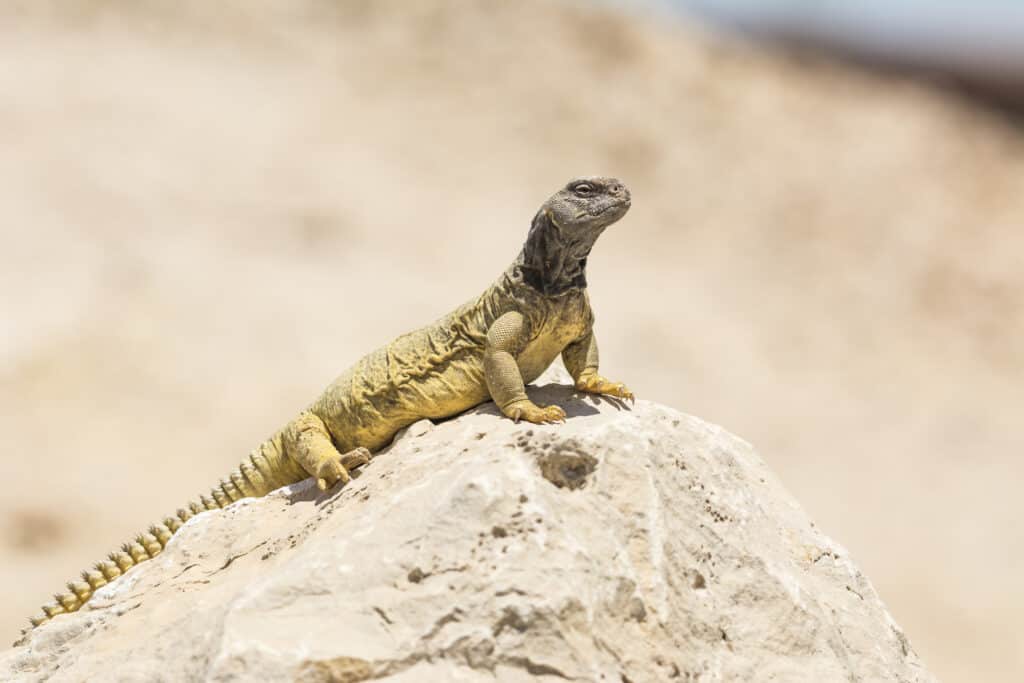
The Dabb Lizard, commonly found in the Arabian Desert, is a regional delicacy,
©P.V.R.M/Shutterstock.com
Up Next
The 8 Coldest Deserts On Earth Are Incredibly Frigid
Discover the 8 Most Beautiful Deserts on Earth
The 15 Largest Deserts in the World
The photo featured at the top of this post is © SelimBT/Shutterstock.com
Sources
- , Available here: https://www.beautifulworld.com/asia/saudi-arabia/arabian-desert/
- William L. Oschenwald, Available here: https://www.britannica.com/place/Arabian-Desert
- , Available here: https://www.newworldencyclopedia.org/entry/Arabian_desert
- , Available here: https://www.worldatlas.com/amp/articles/where-does-the-arabian-desert-lie.html
Thank you for reading! Have some feedback for us? Contact the AZ Animals editorial team.





